Digital marketers have a wealth of amazing tools at our disposal these days. With increasing accuracy, we can help share your messages and with potential clients. But most tools work best with a human touch to ensure that your company’s ad presence online is well received by the actual humans interacting with them. We must always consider how each and every client might interact with our ads.
Often, digital marketers fail to consider one very important group of people: clients who’ve done what you were hoping they’d do. They’ve signed up to your mailing list, downloaded your app, or bought something in your store.
So, from this person’s point of view, their journey has reached a point of completion. Likewise, your ad has worked. So why are you still selling to them?
It’s important to be able to distinguish visitors to your site who’ve completed your desired action, so that you stop serving the same ads them. There are two main benefits to this strategy:
- It’s more cost-effective.
You’ve already succeeded in your mission with this person. You’ve solved their problem, or answered their question. There’s no need to pay for more ads to convince them.
Imagine selling baseball tickets to people who are already sitting in the stands watching the game. It’s pointless. They’ve already completed the desired action: they’ve bought their tickets.
And so, it’s the wrong targeting.(If anything, now is the time to tell them about your delicious food and beverage options. But that’s for another article.) - It’s polite and considerate.
Another risk you run by showing these ads to someone who’s already converted, is that it might cause resentment from the client. How do you supposed they’re going to feel if they complete their purchase journey with you and then see an ad, the following day or following week, pushing the very product or service that they already agreed to?Maybe they’ll laugh. Maybe they’ll feel unheard by you.Maybe they’ll perceive your company as not really caring about them. Maybe when they see the ad, they’ll feel like your company didn’t value the action they took, and so is demanding more. (This one sounds ridiculous, but these things do happen, even if subconsciously.)As a result, a new client can grow resentment towards your company, because you don’t appear to be showing any interest or appreciation for them as a person.
It won’t be perfect, but it will go a long way towards cost-efficiency, and consideration for your client. We want people to love your product. It means fighting against the impulse to just “read the numbers on the screen” and instead go a step further by considering the real-world implications of how we set up our advertising campaigns, in order to reach actual people in a way that’s relevant, useful or even enjoyable.
The Technical Details of Opt-Out Audiences
Effective Digital Marketing requires a blend of tactics to engage customers at all points in the customer journey. One of the most important tactics is retargeting (also called remarketing).
For this tactic to work, we keep track of those people who’ve visited a client’s website and shown some signals of intent. Those signal are different for every website – it’s something we have to discuss with our clients, based on their product, and the type of customers they’d like to engage with.
We use Google Tag Manager to run Google Analytics on the site, as well as using a Facebook Pixel to somewhat anonymously track people’s activity on the site.
We then use a custom set of rules to group certain users, and deliver a retargeting ad to them. The ad will remind them about the website, and bring them back to the site one more time. Often, it’s during this second visit that the customer decides to makes a purchase, make a download, or otherwise make a conversion.
Let’s take a look at how this might work with a band that’s interested in being booked for weddings. In this case, the main goal the client wants is lead generation. They want people to write to them and make an inquiry about hiring the band for their wedding.
The basic setup for retargeting:
In Google Analytics we can create an audience composed of all website visitors over a certain period of time. This is the audience that we’ll be serving the retargeting ads to. These will be display ads – the type you see all around the Internet, on community sites, news sites, and blogs.
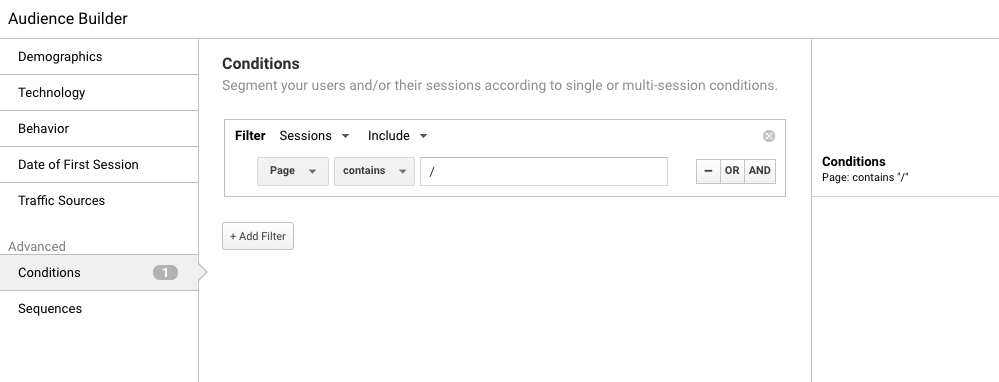
Next, we’ll set up a similar audience in Facebook’s Business Manager. This will allow us to show ads to the same audience, but through Facebook and Instagram.
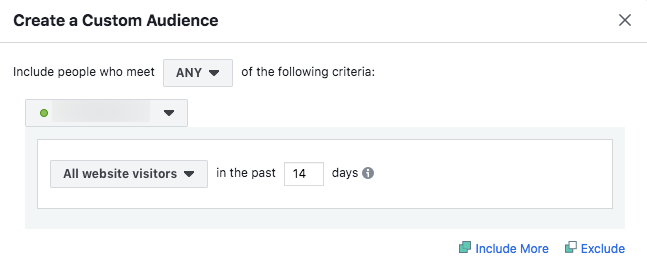
You’ll notice that for both Facebook and Google Analytics, we need to set the recency. This is an important number to consider. For most situations, when we set up audiences for our clients, we use a duration between 10 and 30 days. It all depends on the clients’ unique profile. In our example, we’ve chosen a 14-day period of recency.
“Ugh. This ad again!! I hate this ad!!”.
An effective ad shouldn’t feel like an ad. At Stealth, we’re always aware that if someone sees an ad that’s not relevant to them, then they will probably be annoyed. A successful ad should feel like a solution to someone’s problem. If that problem has already been solved, then the ad is no longer useful. It’s just annoying.
So, we need to update our rules, in order to exclude people who’ve already gotten their question answered.
How the Opt-Out Works
We update our rules to exclude a person when they’ve visited key pages on the website:
1. A page the user visits after they complete the desired goal.
For an online store, this can be an order confirmation page. However, in our example, our goal is to get people to contact the band. So, we create a Thank You Page that’s displayed once a user has sent a message to the band.
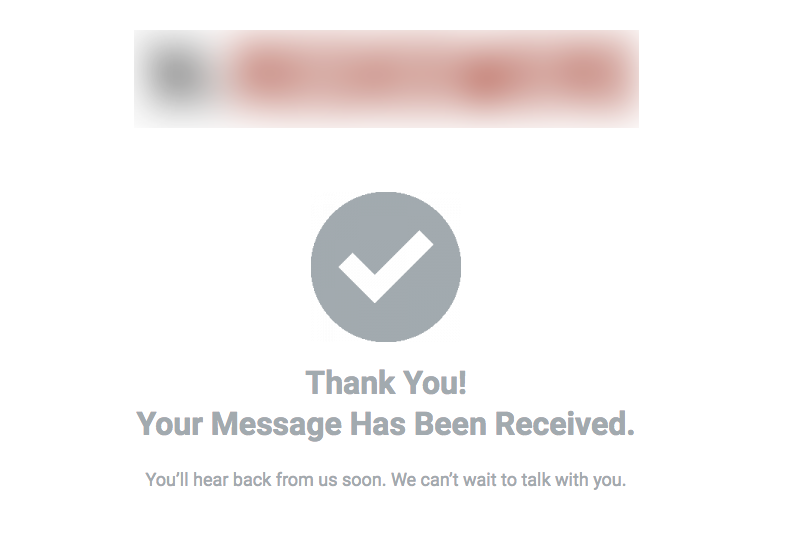
It’s important that this page can only be reached by someone if they complete the desired action. So, we must make sure that there are no other ways to reach the page easily. That means removing any automatically-created links to the page. Some websites will automatically add new pages to the site’s navigation menu bar. In that case, we must manually remove the thank-you page from this list.
It’s also helpful to built some sort of robots.txt exclusion list for crawlers like Google. This will make sure that Google doesn’t add the Thank You page to its index.
Now, we simply update our rules in both Google Analytics and Facebook Business manager, to exclude visitors to the ‘/thank-you’ page.
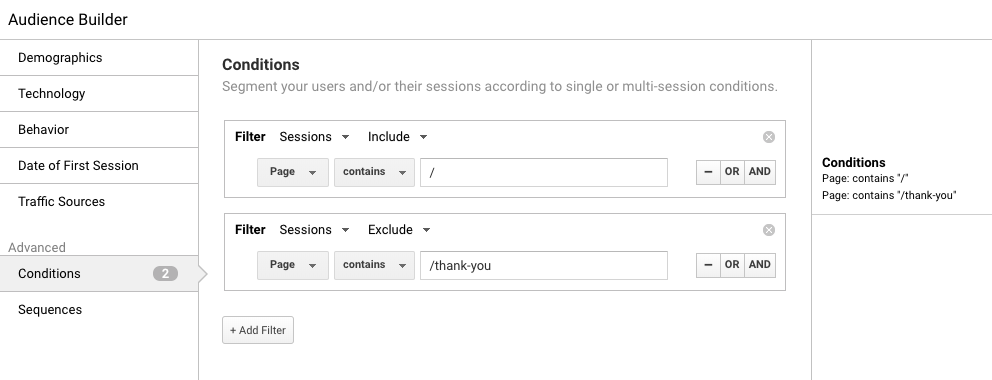
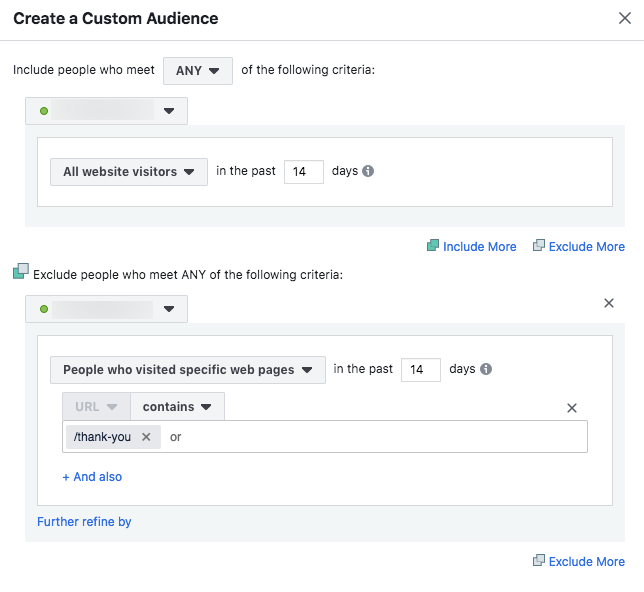
2. An Opt-out page, as part of a privacy page.
There may be those visitors to your site who learned about your services or product, and have decided that they are not interested. That’s okay. That’s the reality of the situation. These people won’t complete your desired goal. But sending them additional ads is still a waste of money, since they’re not interested.
For this audience, we give the option of an opt-out, by allowing them to visit a specially crafted /opt-out page. We link to this page through the website’s privacy policy page.
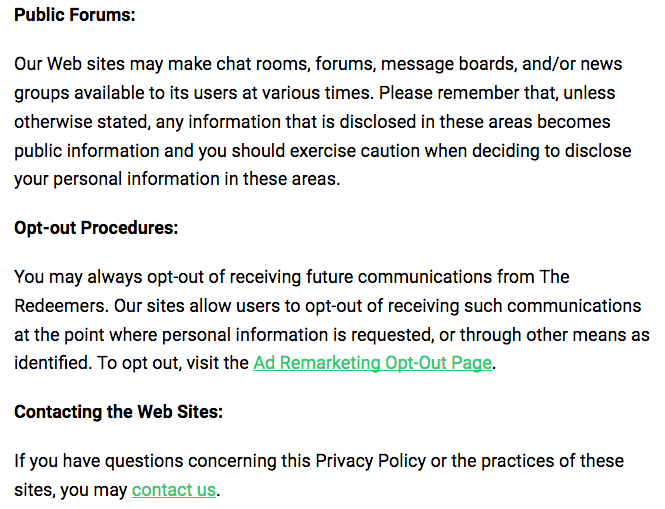
In the above example the link, ‘Ad Remarketing Opt-Out Page’ will bring the visitor to the /opt-out page, which looks like this:
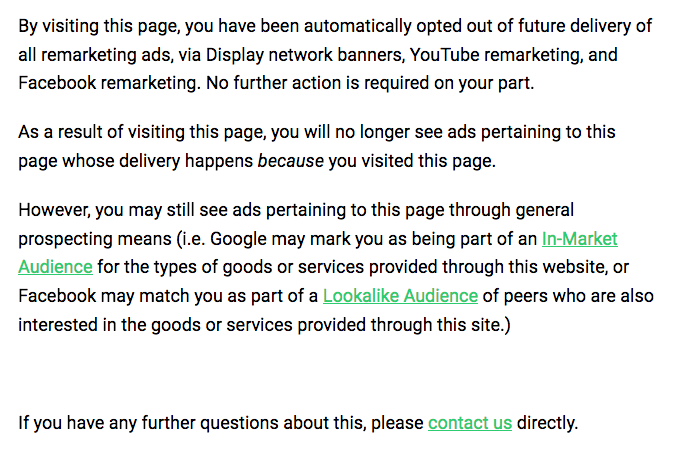
But remember to add the /opt-out page to your norobots.txt file, and ensure that it hasn’t accidentally been automatically added to your site’s navigation menu.
As for the Privacy Policy page, we generally like to add a subtle link to this page in the site’s footer. From our point of view, it feels decent and fair.
Now, we update our exclusion rules again to include /opt-out. Remember to set the audience to exclude /thank-you OR /opt-out visitors (as opposed to AND).
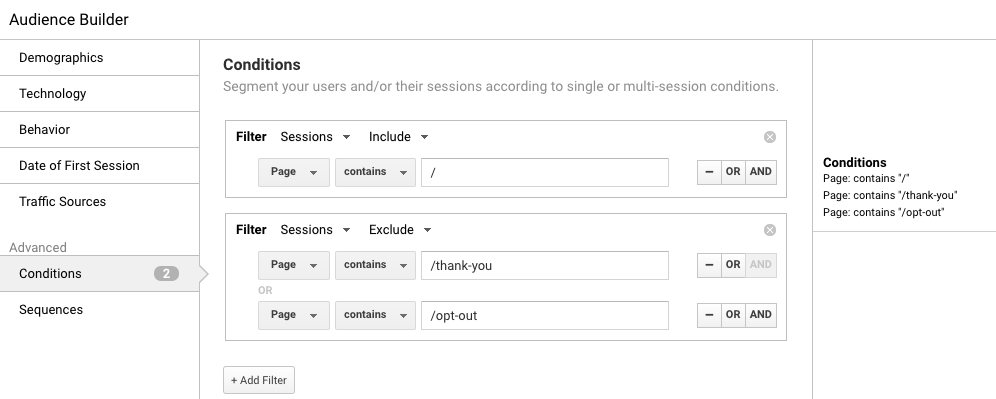
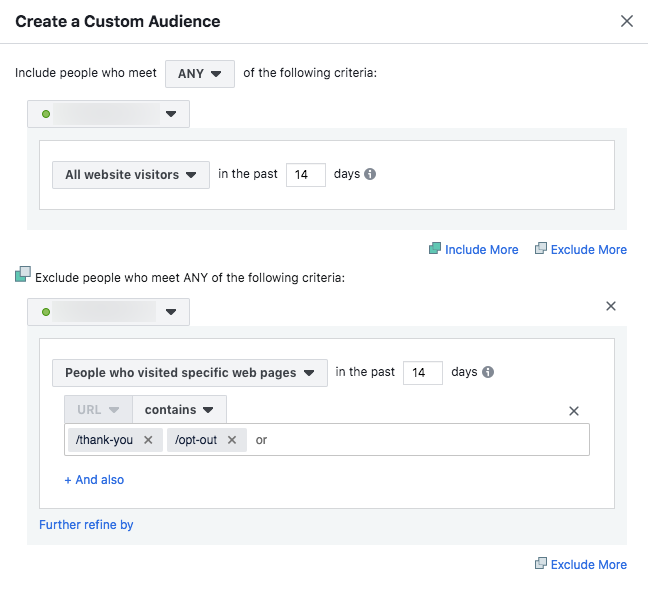
And that’s it! Efficiency Level 100!! 👍
This takes a bit of work to set up, but we strongly believe – especially for our Canadian digital marketing clients – that there’s great value in matching the behaviour of ads to the ways in which your present and future clients are actually interacting with your product, in real life.
With this bit of extra attention, we see higher quality website traffic and offline conversions, and clients see increased ROI on their ad spend.











